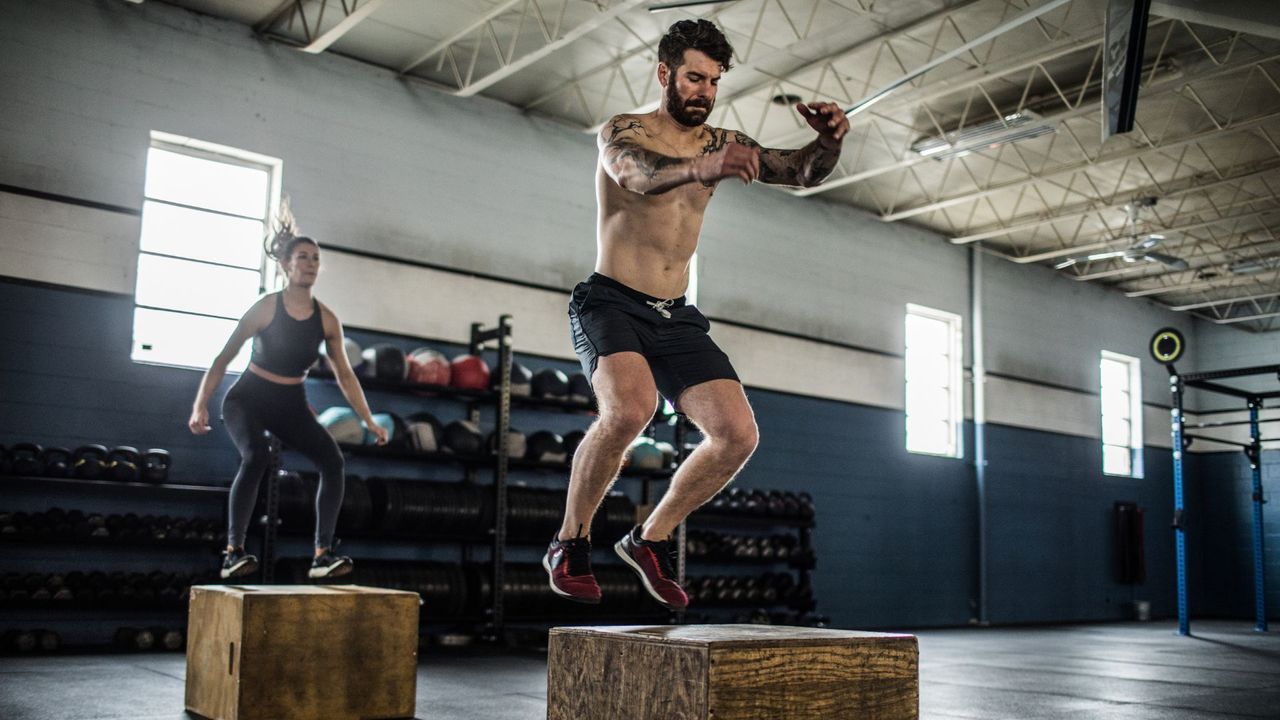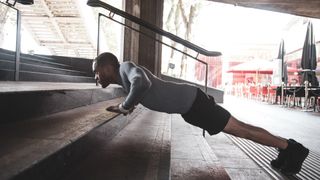ActiveWorkoutsPlyometric exercises: what are they and how to incorporate them into your trainingWant to build explosive power and strength? Plyometric exercises could helpWhen you purchase through links on our site, we may earn an affiliate commission.Here’s how it works.
ActiveWorkoutsPlyometric exercises: what are they and how to incorporate them into your trainingWant to build explosive power and strength? Plyometric exercises could helpWhen you purchase through links on our site, we may earn an affiliate commission.Here’s how it works.
Want to build explosive power and strength? Plyometric exercises could help
When you purchase through links on our site, we may earn an affiliate commission.Here’s how it works.
(Image credit: Getty Images)

(Image credit: Getty Images)
If you’re looking to up the intensity of your workouts and burn some serious calories, then it may be time to incorporate some plyometric exercises into your training. “Plyometric exercises involve explosive movements that rely on the stretch-shortening cycle of muscles such as jumps, hops, bounds, and skips,” says Mitch Raynsford ASCC – Lead Physical Performance Coach atP3RFORM. “They aim to improve muscle power, speed and overall athletic performance.
Benefits of plyometric exercises
As well as the few we’ve mentioned already, Mitch says plyometric exercises can also improve bone health, as they can contribute to better bone density and muscle strength, as they “strengthen the muscles and connective tissues involved in explosive movements”. If you do any types of training that involve explosive movements too (think running, basketball etc), then incorporating plyometrics into your training regime can help improve your performance. For example, if you’re a sprinter,they can help improve your running speed.
(Image credit: Getty Images)

(Image credit: Getty Images)
How to incorporate plyometric exercises into your training
If you’ve never done these type of exercises before, then the key is to definitely do it gradually. “Start with low-intensity plyometrics and gradually increase the intensity and complexity as your strength and conditioning improve," says Mitch. “Adding them into an extended warm up is a great way to introduce these to your current training regime without overtraining.” He also adds to make sure you do a thorough warm up, so that your joints and muscles are prepared for the high-intensity of these exercises. As well as a good warm down too.
They’re also an exercise you shouldn’t do all the time either, especially if it’s your first time. “Beginners may start with one session per week or even just in the warm up and progress to two to three sessions weekly as they adapt,” says Mitch.
Are plyometric exercises safe for everyone?
The simple answer is no. Despite being beneficial, plyometric exercises to have a higher risk of injury as they are high impact, which is why it’s key to nail the basic movements first and get your form on point. “If you have a low training age, I would recommend you work on the form of controlled resistance based training first or look to bring low level plyos into a short warm up to start with,” says Mitch. Individuals with a history of joint issues, recent injuries, or low fitness levels should also exercise caution, as well as those who are pregnant or who suffer from cardiovascular conditions. If you’re not sure whether plyometric exercises are suitable for you then contact a healthcare professional or a qualified fitness trainer before adding them into your training.
(Image credit: Getty Images)

(Image credit: Getty Images)
Four plyometric exercises you can do at home
As we mentioned earlier, plyometric exercises don’t require anyhome gym equipmentand are a great bodyweight exercise. Here’s Mitch’s top five that you can incorporate into your warm-ups, workout, or even create your own HIIT routine with.
Sign up to the T3 newsletter for smarter living straight to your inbox
Get all the latest news, reviews, deals and buying guides on gorgeous tech, home and active products from the T3 experts
- Pogo jumps
Pogo jumps are quick, continuous jumps landing on the balls of your feet that develop lower leg strength
To do:
- Incline explosive press-up
(Image credit: Getty Images)

(Image credit: Getty Images)
“This bodyweight exercise that targets the upper body, specifically the chest, shoulders, and triceps,” says Mitch. “It adds an explosive element to the standard push-up, enhancing the rate of force development.”
To do:
- Hop and hold
Not only does this enhance lower body strength, but it’s a great exercise to challenge your core and stability too.
- Counter movement jump
(Image credit: Getty Images)

(Image credit: Getty Images)
To do:

Samsung Galaxy S25: every leak, rumour and spec we’ve heard before the launch eventThis is everything we’ve heard about the new handsets
This is everything we’ve heard about the new handsets

This case turns your iPhone or Android phone into an e-reader, but there’s a catchActually, there are a couple…
Actually, there are a couple…